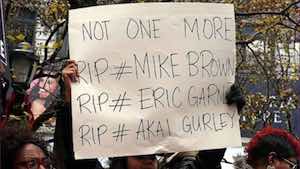If you're paying more for rent this year, you're not alone. Rents climbed an average of 15 percent across the country between 2009 and 2014, according to a recent analysis by the National Association of Realtors, and the cost to rent in some markets like New York, Seattle and San Francisco has jumped more than 20 percent.
Renters nationwide can now expect to spend 30 percent of their income on rent, according to a new report from the real estate data firm Zillow, which noted that rental affordability worsened year over year in 28 of the 35 largest metro areas covered by the company.
Lawrence Yun, chief economist at the NAR, attributes rising rents to "supply constraints" in housing and rentals: fewer rentals means higher prices. And millennial renters have been particularly hard hit, as rents are rising faster than income levels in many markets. "It's very demoralizing," he said.
But that doesn't mean you can't get a good deal—even in high-rent cities. Here's how to get the most for your money no matter where you live.
Expand your search. Rent is often highest in the hottest areas of a city. Even moving a couple subway stops or highway exits away can make a big difference in what you'll pay, said Paul Magyar of Mirador Real Estate in New York City.
For example, the average price of a one-bedroom apartment in Manhattan was nearly $3,200 (in a nondoorman building) in July, according to the latest rental market report from real estate group MNS. But the average rent for a one-bedroom apartment in Harlem, an area that is rapidly gentrifying, was $2,145—far less than the city's overall average rent and $700 less per month than the average one-bedroom rent in the neighboring Upper West Side neighborhood. And Harlem is only one or two stops away from midtown Manhattan on an express subway line.
Moving a little further outside a city can also save money. But it's worth factoring in the cost of owning a car and paying for gas if you're considering a suburban rental versus living in a city with good public transportation.
Decide your budget and stick to it. Before you start looking, figure out what you can afford to pay each month. Experts suggest spending no more than 25 to 33 percent of your income on rent. "It's not an investment," said Catherine Seeber, a senior financial advisor at Wescott Financial Advisory Group in Philadelphia. And you want to make sure you have enough money set aside for emergencies and other expenses. (A new Zillow analysis found renters with a high burden—those who spend more than 30 percent of their income on rent—have a median savings rate of zero.)
Don't forget incidentals. Be sure to find out what's included in the rent and what's not (like water, heat and laundry). Seeber also recommends making sure your landlord, building superintendent or management company will be easily accessible. Otherwise, if you need an emergency repair, it could end up costing you time—and money, if you pay out of pocket with no guarantee of reimbursement.
Consider a roommate. Splitting the rent with a roommate means you can often afford a nicer apartment than you could on your own. Not only will you save money on rent, but you can split the cost of utilities, Wi-Fi and other bills.
Check the out clause. Find out what's entailed if you or your landlord wants to end the lease early. Not only do you want to know what you might be responsible for if you need to move before your lease ends, but you want to know what to expect if an owner decides to sell the unit or move into it. If that happens, you could end up looking for a new place and paying moving fees before you planned on it, said Brian Morgan a realtor for Citi Habitats in New York City (where you may be on the hook for another broker's fee as well).
You could also consider living in a more reasonably priced city like Detroit, Memphis, Tennessee, or Lexington, Kentucky, where the NAR noted incomes have risen faster than rents. Although the same rules apply there too, of course.








